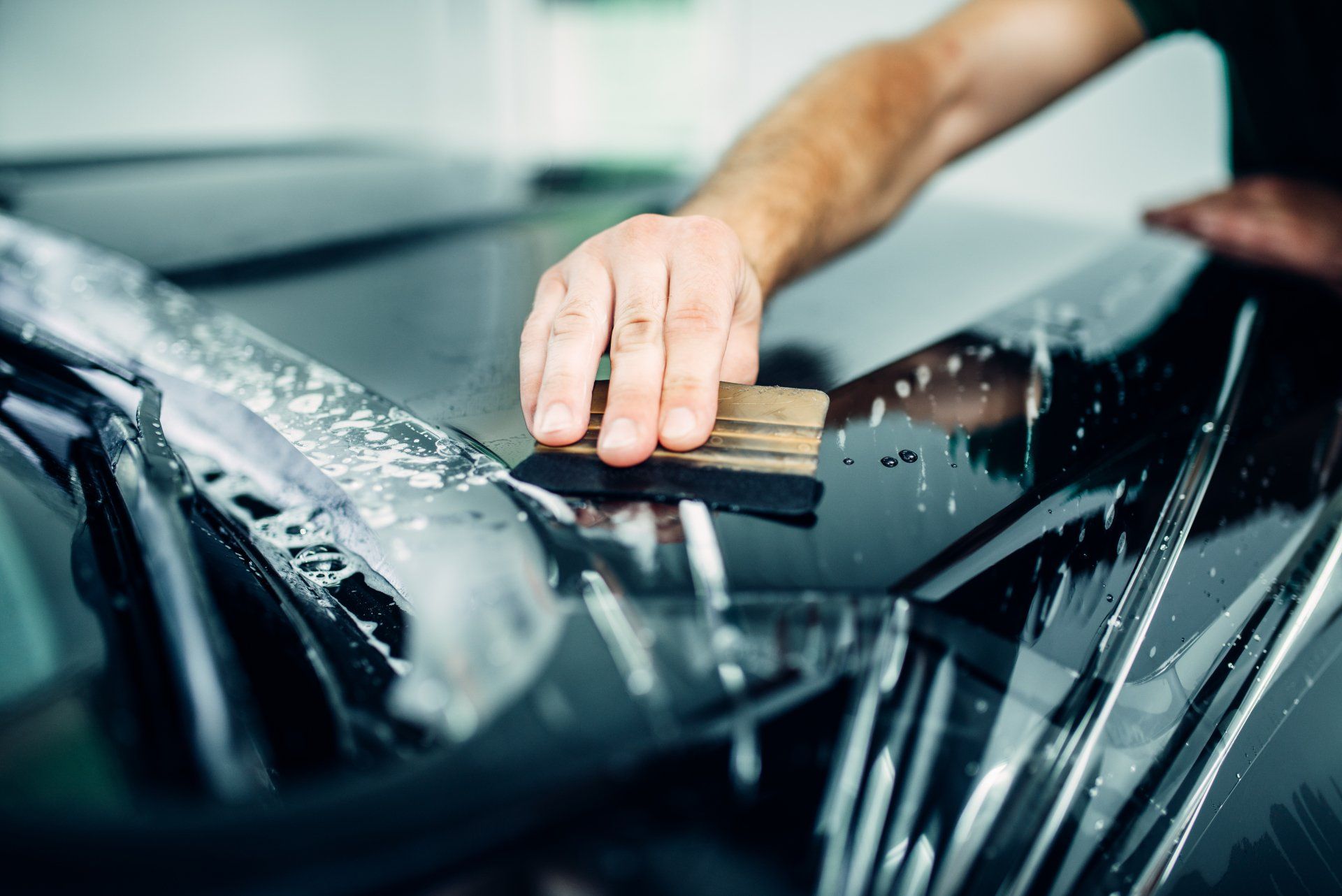How to Apply Ceramic Coating and Achieve Professional Results
How to Apply Ceramic Coating and Achieve Professional Results
Blog Article
Ceramic Finishing vs. Standard Wax: Which Provides Much Better Long-Term Defense?
The debate in between ceramic coverings and traditional wax for car protection has garnered considerable interest amongst automotive fanatics and professionals alike. While both satisfy of guarding paint, their differences in durability, application, and long-term maintenance costs may influence a consumer's choice. Ceramic coverings flaunt remarkable durability and resistance to ecological aspects, yet the intricacy of their application elevates concerns regarding accessibility and practicality. As we explore these contrasting alternatives, it becomes important to consider not just the immediate benefits however likewise the ramifications for lorry treatment over time.
Review of Ceramic Finish
Ceramic covering has actually gotten significant appeal amongst vehicle enthusiasts and detailers alike as a result of its sophisticated safety high qualities. This innovative modern technology is made to develop a long lasting, hydrophobic shield over a lorry's paint surface, considerably boosting its resistance to ecological pollutants such as dirt, UV rays, and chemical stains. Unlike standard wax, which offers a short-term layer of protection, ceramic finishes bond at a molecular degree with the paint, providing long-lasting longevity-- usually prolonging beyond 2 years with appropriate maintenance.
The application procedure involves thorough preparation of the car's surface, consisting of cleansing and polishing to guarantee ideal attachment. Once applied, the finish treatments to form a robust layer that not only adds deepness and gloss to the paint yet additionally simplifies maintenance. With its hydrophobic residential properties, ceramic coating allows water and dirt to slide off more quickly, minimizing the frequency of laundries and lessening the danger of swirl marks.
In addition, ceramic coatings are available in various formulas, enabling individuals to choose items customized to their specific needs and preferences. In general, ceramic finish stands for a considerable innovation in paint defense technology, delivering exceptional performance contrasted to standard alternatives.
Review of Traditional Wax
Generally considered a staple in vehicle care, wax serves as a prominent selection for those seeking an uncomplicated technique to enhance and secure their lorry's paint - ceramic coating. Automotive wax generally makes up all-natural components, such as carnauba, or artificial substances, developed to produce a protective layer externally of the paint. This layer not only improves the automobile's gloss and beam but likewise gives a barrier against ecological pollutants
The application of wax is usually straightforward, making it obtainable for both professionals and Do it yourself enthusiasts. When applied, wax requires a healing duration, after which it solidifies to develop a safety covering.
Nevertheless, while wax is reliable for boosting the aesthetic appeal of a vehicle, it is crucial to keep in mind that the defense it uses may necessitate a lot more regular reapplication contrasted to alternate products, such as ceramic coatings. On the whole, standard wax remains a preferred choice for those focusing on ease of use and prompt visual enhancement.
Resilience and Long Life Comparison
While both ceramic layers and typical wax offer safety benefits for automobile paint, their durability and long life differ substantially. Typical wax, typically made from natural carnauba or synthetic polymers, generally gives a safety layer that lasts about 3 to 6 months. This fairly brief life expectancy requires routine reapplication to maintain ideal security.
On the other hand, ceramic finishings are engineered from advanced nanotechnology, forming a covalent bond with the paint surface area. This causes a durable, hydrophobic layer that can withstand for two to five years, depending on the item and ecological conditions. The exceptional sturdiness of ceramic finishings is associated to their chemical structure, which uses improved resistance to scrapes, UV rays, and oxidation.

Defense Against Ecological Factors
Shielding a car's paint from ecological elements is critical for preserving its look and value gradually. Automobiles are frequently exposed to a selection of elements, consisting of UV rays, bird droppings, tree sap, acid rain, and road grime, all of which can endanger the integrity of the paintwork.
Ceramic finishes provide a durable defense versus these environmental assailants. Unlike typical wax, which can deteriorate swiftly under UV direct exposure, ceramic finishings form a resilient, hydrophobic layer that stands up to the damaging Resources results of sunlight and environmental toxins. This advanced innovation develops a chemical bond with the vehicle's surface, using superior protection that lasts for years, also in harsh conditions.
Standard wax, while less complicated to apply, commonly requires regular reapplication and uses limited resistance to pollutants and UV rays. In time, it can break down, leaving the paint prone to scratches and oxidation. On the other hand, ceramic coverings maintain their protective qualities longer, significantly reducing the risk of paint damage and guaranteeing that the car maintains its visual charm. As a result, ceramic coverings are progressively acknowledged as the remarkable selection for lasting security against environmental factors.
Application and Upkeep Distinctions
The methods of application and subsequent upkeep for ceramic layers and typical wax differ considerably, impacting the general user experience and effectiveness of each item. Ceramic finishings call for an even more complex application procedure, generally involving surface prep work that consists of washing, sanitizing, and polishing the car. When the surface is all set, the ceramic finish is applied in a regulated atmosphere, often needing expert proficiency to make sure correct healing and bonding to the paint.

While both products improve vehicle appearance, the longer-lasting defense provided by ceramic finishes may justify their preliminary financial investment, in spite of the even more demanding application process. On the other hand, traditional wax stays a preferred choice for those looking for a less complex, albeit short-term, option.

Verdict
To conclude, ceramic finishings demonstrate substantial advantages over standard wax in terms of resilience and ecological protection. With a lifespan prolonging two to five years and exceptional resistance to UV visit this website rays, dirt, and chemical discolorations, ceramic layers provide a more effective service for long-term lorry upkeep. Although the application procedure may need specialist expertise, the resulting cost financial resource savings and reduced regularity of reapplication underscore the worth of ceramic coverings for those seeking ideal lorry protection.
The discussion between ceramic layers and traditional wax for vehicle protection has actually amassed substantial interest amongst vehicle fanatics and specialists alike. Unlike traditional wax, which provides a temporary layer of protection, ceramic layers bond at a molecular degree with the paint, supplying resilient longevity-- typically extending beyond 2 years with proper maintenance.
While both ceramic layers and conventional wax deal protective benefits for automobile paint, their toughness and long life vary substantially. For auto fanatics seeking long-term protection, ceramic layers present an engaging benefit over traditional wax products.
In conclusion, ceramic finishings show considerable advantages over conventional wax in terms of durability and environmental protection.
Report this page